Nissan Versa Sales Plunge Because Nissan Wants to Help Dealers Sell Certified Pre-Owned Vehicles
America’s historic subcompact car segment leader, the Nissan Versa, suffered a sharp 22-percent U.S. sales decline in the first half of 2017.
In fact, total Versa sales plunged 45 percent in June 2017. The Versa remained America’s top-selling subcompact nameplate, and by a wide margin. Even in June, when Versa sales plunged by more than 6,500 units, Nissan still owned nearly a quarter of America’s subcompact market.
Nevertheless, it’s odd to see the segment leader, a car that was selling better than ever at this time last year, suddenly dropping like a stone, declining even more rapidly than the segment as a whole.
But after years of using the Nissan Versa as a tool for turning used car buyers into new car buyers, Nissan USA is scaling back factory support for the Versa in lieu of assisting Nissan dealers with their certified pre-owned efforts.
Infiniti Is Poised to Overtake Acura in America's Auto Sales Race for the First Time Ever
They’re always bridesmaids, never the bride.
But after holding down the fort as America’s second-best-selling Japanese premium brand since surrendering to Lexus some two decades ago, Acura is now about to be bumped from its maid of honor position.
Scottie Pippen? Acura is quickly becoming Toni Kukoc.
After a record U.S. sales performance in 2016, Infiniti sales are rising faster than any other auto brand in America save for four niche-market luxury contenders. After trailing its Acura compatriot for 28 years, it’s past time for Infiniti to catch the bouquet.
Jaguar Land Rover Exec: New Discovery Causes Traditionalists to 'Pine Over' Old Discovery Shape
“But in some cases, the traditionalists are going to
maybe pine over the squarer shape of the previous four iterations.”
– Jaguar Land Rover Australia Managing Director, Matthew Wiesner
The Land Rover Discovery, known for a time in North America as the LR3 and then LR4 whilst alphanumeric nomenclature was deemed necessary if one was to steal market share from the Lexus GX460, is a box.
Or rather, it was a box. For nearly three decades, through the Series I and Series II and then the LR3 and LR4 that ran for a dozen years or so, Land Rover’s sub-Range Rover was squared off. Hard lines. Rectangles. Right angles. No Bangles.
Land Rover has rediscovered the Discovery name in North America, but the brand did not manage to rediscover the Discovery’s styling themes. And on the other side of the world from Land Rover’s Coventry HQ, Australia’s Jaguar Land Rover boss is vocalizing a major concern.
“The new shape is certainly going to test some of the traditional owners of Discovery,” Matthew Wiesner told CarAdvice.
The Third-generation BMW X3 Absolutely Must Be the Best-Selling Small Luxury Crossover in 2018, BMW CEO Says
“We created that segment,” BMW CEO says of the sector in which the BMW X3 arrived before Acura, Audi, Infiniti, Lexus, Lincoln, Mercedes-Benz, Porsche, and Volvo.
“The No.1 approach and target I clearly have is, there shouldn’t be anyone besides us who is No.1,” Krueger told Automotive News Europe.
In the U.S., where Krueger’s goals (expectations? demands?) for the South Carolina-built BMW X3 are lofty, the X3 ranked a distant fifth in the category in 2016.
But Krueger ain’t kiddin’ around.
Toyota Turning Toward Rental Fleets and the RAV4 to Boost Volume
We’re beginning to pummel a dying horse here but, as you already know, the North American automotive market is shrinking right now. Toyota wants to mitigate this by funneling sales into rental fleets. While this tactic has become unpopular with automakers like General Motors, others have bolstered fleet sales to cope with the lackluster demand. Hyundai, for example, has relied heavily on rental companies to boost its total volume, but the move has placed dealerships and the corporate office at odds with each other.
Toyota’s U.S. deliveries fell 3.6 percent through June of this year, which is 1.5 percent ahead of the industry’s overall decline. The automaker wants to fill the gap by ramping up volume to rental companies before the end of 2017. Like Hyundai, Toyota’s best sellers are passenger cars — which have taken the brunt of consumer apathy of late — but knows it can still unload them on Enterprise, Avis, and Hertz.
How Do Americans Manage to Pay Record High Prices for New Cars in 2017? By Paying Forever
Yet month after month, for six consecutive months to begin 2017, automakers are witnessing fewer and fewer buyers walking into dealers after sales shot to record levels in calendar year 2016.
Incentives, at $3,550 per car, are an effective lure. But that doesn’t change the fact that buyers are paying, on average, $33,000 and borrowing, according to Edmunds, $31,000 in order to finance a purchase.
How do car buyers afford the highest prices on record? By stretching the payment period to the longest terms ever: 69.3 months in June, Edmunds says.
At Lincoln, the Battle Between New Product and Your Grandfather's Town Car Continues
It’s been an interesting few years at Ford Motor Company, especially for the automaker’s prestige marque. Ever since Ford decided that reviving the listless Lincoln brand with a life-giving cash infusion was the right way forward, watching the division reconcile its unsavory near-past and mouth-watering distant past with its present and future has become a source of amusement.
Not to say that Lincoln’s executives and PR teams are stumbling like Gerald Ford. Far from it. However, sometimes a statement causes a “whoa, hold on a minute” moment that’s too big to ignore.
Subaru Incentives Are Skyrocketing In America, But Remain Absurdly Low By 2017 Standards
Maybe, we told you in early May, you’ll soon be able to get a deal on a Subaru Outback.
As new vehicle demand gradually shrinks in America, every automaker wants to grow their market share in order to maintain steady sales output. “Sure, there are fewer buyers,” the automaker says, “but we’ll grab more of them.”
Decreased demand has a tendency to increase competitiveness. Not surprisingly, Subaru anticipated the need to more dramatically increase incentives on the least-incentivized cars in America as 2017 progressed. Even an in-demand automaker such as Subaru is going to struggle when rival automakers are routinely dropping prices by more than 10 percent.
Thus, according to ALG, Subaru’s average discount per vehicle shot up 63 percent, year-over-year, in June 2017.
It's Official: The Hyundai Azera Is Dead After 2017 - Genesis Knocked It Down, SUVs Kicked It
In a release yesterday detailing the company’s 2018 lineup, Hyundai confirmed that U.S. market availability of the Hyundai Azera will be discontinued.
But have no fear, dear lover of affordable large sedans. The 2017 Hyundai Azera is not yet thin on the ground.
Roughly 1,000 Azeras are currently sitting on dealer lots across the United States, enough — at the Azera’s recent sales pace — to last until mid-fall.
The Azera doesn’t deserve to meet such a tragic end, but its demise is one we knew about long before Hyundai’s official announcement on July 5, 2017. U.S. sales plunged 82 percent over the last decade.
When is a Delivery Not a Delivery? When It Involves a French Volkswagen
There’s nothing like the antics automakers get up to when fierce rivalry or falling sales forces an emergency pressing of the desperation button. Just last year, Fiat Chrysler Automobiles found itself in quite a bit of hot water after its long-running sales-recording practices came under the federal microscope. Mounting pressure eventually forced the company to dial back its monthly figures, shattering some advertisement-friendly sales streaks.
Across the pond, Volkswagen now finds itself with egg (quiche?) on its face following a report by its internal auditors. According to German publication Der Spiegel, the automaker plumped up its French sales tallies for years — to the tune of at least 800,000 vehicles.
The details of this latest case of sales fudging, which apparently went undiscovered for seven years, seem particularly brazen.
Britain's Best-Selling Vehicle in June 2017 Was Not a Ford, Strange As That May Sound
The Volkswagen Golf was the best-selling new vehicle in the United Kingdom in June 2017, according to the Society of Motor Manufacturers and Traders.
So what, you say, the Golf is historically a European powerhouse, a fine car by all accounts, just one that’s not entirely suited to American sales success.
But for the Golf, typically a top five car, to earn outright best seller status in the UK, something had to give.
At just the right time, when the Ford Fiesta was at a weak point, the Volkswagen Golf stepped up with a 29-percent year-over-year increase despite shrinking demand across much of the UK market. The result: the Golf ended a Ford Fiesta streak that had been in good standing for 29 months.
Was the Nissan Rogue Truly America's Best-Selling SUV/Crossover* in June 2017? We'll Never Know
Nissan reported 34,349 U.S. sales of the Rogue in June 2017, a 17-percent year-over-year increase that drove the Rogue to its third monthly victory in America’s SUV/crossover sales race this year.
But June was the first time since March in which the Rogue — sales of which have now increased in eight consecutive months — topped the utility vehicle segment.
What propelled the Nissan back into the top spot after a two-month hiatus?
Another Rogue. Mysteriously missing from Nissan’s June sales report, despite six weeks of sales activity, was the Nissan Rogue Sport, known in other markets as the Nissan Qashqai.
Disappointingly, for the purposes of U.S. sales reports, Nissan is combining sales of the Rogue and new Rogue Sport. Thus, we’re left to wonder whether the Rogue, on its own, was America’s best-selling SUV/crossover in June or if the Rogue requires an asterisk alongside its position in the victor’s column.
Ram's Three-month-long Streak of Outselling the Chevrolet Silverado? It Ended in June
March 2017 marked just the third occasion in three years in which Fiat Chrysler Automobiles’ Ram P/U line outsold the Chevrolet Silverado in the United States.
One month later, in April, Ram did it again.
Then in May 2017, Ram made it a threepeat, outselling the traditional No. 2 pickup truck in America by more than 1,000 units. By the end of May, the Silverado was only 5,055 sales ahead of the Ram on year-to-date terms, a narrow gap which served to highlight the possibility that the Ram could outsell the Silverado for the first time ever in calendar year 2017.
But June 2017 marked an end to Ram’s party, at least for the time being. General Motors reported 50,515 Chevrolet Silverado sales in June, a 2-percent year-over-year uptick and 7,442 more sales than FCA’s Ram truck lineup managed.
How did GM manage to end the trend? By earning less money per truck, naturally.
Midsize Sedan Deathwatch #13: 2017's Grim First-half 198,000-unit Loss
Midsize car sales volume decreased by nearly 200,000 units in the United States during the first-half of 2017.
Year-over-year, that 18-percent decline was caused by virtually every member of America’s midsize sedan fleet. Escaping unscathed, on its own, was the Volkswagen Passat, though Passat sales are significantly lower than they were in 2012, 2013, 2014, and 2015.
Aside from the Passat, midsize cars are selling much less often this year than last at every competing automaker; from the top-selling Toyota Camry to the slow-selling Mazda 6, from the all-wheel-drive-optional Ford Fusion to the all-wheel-drive-standard Subaru Legacy; from the new-last-year Chevrolet Malibu to the never-again-new Chrysler 200.
Most automakers, however, are blessed to possess similarly priced compact crossovers that are making up all, much, or some of the slack.
U.S. Auto Sales Brand-By-Brand Results: June 2017 YTD
Auto sales slid 3 percent in the United States in June 2017, marking the end to a first-half of 2017 in which U.S. auto sales declined in six consecutive months.
Despite Acura-fuelled improvements at American Honda, RAV4-powered increases at Toyota, Volkswagen’s continued bounce-back from the brink, a 6-percent jump in full-size pickup truck sales, and modest gains at a number of America’s top-selling premium brands, June volume fell by roughly 45,000 units, year-over-year.
June wasn’t a horrible month for auto sales in America, just as the first-half of 2017 was not a dreadful stretch. The comparison with 2016, a record year for auto sales in America, causes 2017 to appear worse than it really is.
North American Dealers Annoyed by Hyundai's Lousy Volume Strategy
Since 2009, Hyundai’s North American volume has seen record sales every single year. While the last few annual assessments haven’t resulted in the same volume boom as the immediate post-recession years, the company hasn’t seen any shrinkage — despite below-average incentive spending and a lineup that doesn’t exactly sync with the region’s evolving automotive tastes. Hyundai dealers are probably singing the brand’s praises and getting its logo tattooed on their staff then, right?
Not quite. While Hyundai has achieved nearly a decade of growth in the Wild West, dealers are growing increasingly disappointed with its tactics and are less than enthused about future business prospects — especially as it doesn’t appear Hyundai has any interest in scaling back car volume for the sake of SUV sales.
In fact, while both the Hyundai Elantra and Sonata remain higher-volume models, both have undergone a noticeable delivery decrease since 2012. Meanwhile, sales of utility vehicles like the Santa Fe and Tucson have nearly doubled in the same timeframe. Hyundai put 62,817 Tucson SUVs onto North American roads in 2012, and that figure rose to 113,502 last year. It could have been more, had the company been better at supplying those vehicles.
Just Make a Decision Already: Ford CEO Wants Automaker to Pick Up the Pace
While he’s only been in the big chair for little over a month, Ford Motor Company CEO Jim Hackett has already pinned down a serious problem in need of immediate change. Decision making. Or, more specifically, the need to get the lead out when rapidly changing market trends threaten company profit.
The former chairman of Ford Smart Mobility LLC, who replaced an ousted Mark Fields in late May, was brought in to guide the Blue Oval through a “transformative period” in the industry. One way he might do this is to borrow an idea from the NBA.
June 2017 U.S. Auto Sales Likely Slid for a Sixth Consecutive Month As Incentives and Transaction Prices Rise
Automakers likely sold fewer than 1.5 million new vehicles in the United States in June 2017, a modest decrease of around 2 percent compared with June 2016.
While auto sales remain high by historic standards — 1.48 million sales would still make June 2017 more than 15-percent better than the 1.33 million June average from 2011-2015 — June nevertheless represents the persistence of a negative trend.
After 2016 ended with a December boom to close out the highest-volume year on record, auto sales in the United States declined on a year-over-year basis in each of 2017’s first five months. A 2-percent drop in June, worth roughly 30,000 lost sales, will run the streak of decreases to a full half-year.
The American auto industry’s decline comes as automakers continue to incentivize heavily and, fortunately for manufacturers, consumers grow ever more willing to pay higher prices.
McLaren Automotive Sales and Profits Are Soaring; 2017 Expected to Be Even Better Than 2016
SUVs aren’t the only means of success in the global auto industry in 2017.
Sports cars, supercars even, appear to be a useful means of sourcing profits, even for a relatively young automaker such as McLaren.
It’s often said that the one way to make a small fortune racing cars is to start with a large fortune. The theme is just as accurate when it comes to automotive production and sales.
Yet McLaren, which began series production of road cars only seven years ago, saw its profits jump 70 percent, year-over-year, to USD $12 million in 2016 as global sales doubled.
More than one-third of the McLarens sold in 2016 are found driveways in North America.
General Motors' 2017 U.S. Auto Sales Forecast Adjusted (Downward)
General Motors no longer expects the U.S. auto industry to collect more than 17.5 million new vehicle sales in 2017.
GM’s chief financial officer, Chuck Stevens, revisited the automaker’s U.S. sales forecast and turned the wick down from the mid-17-million-unit range, according to Automotive News, to the low-17-million-unit range.
That’s not a low number. In fact, 2017’s reduction of some 300,000 sales across the industry, year-over-year, would produce the second-best year for auto sales since 2001.
But reduced demand is complicating matters for the entire industry, most particularly for large automakers with excessive inventory.
Toyota Truly Believes 2018 Camry Will Do For Midsize Sedans What Tacoma Did For Midsize Trucks; Kentucky Plant Employment At All-Time High
Excited at the prospect of an all-new midsize sedan despite a drastic decrease in demand for midsize sedans, Toyota is ramping up employment at the Camry’s assembly plant in Georgetown, Kentucky.
With 700 additional manufacturing workers helping to launch the 2018 Toyota Camry, employment at Toyota’s Kentucky facility grew to 8,000, more than at any point in the plant’s three-decade history.
Toyota also builds Avalons and Lexus ES350s in Georgetown. (The Venza, a former Georgetown wagon, is dead.) But it’s the Camry, especially this all-new 2018 Camry, that will bring glory to the Kentucky plant if glory can indeed be brought.
Jack Hollis, the Toyota division’s group vice president and general manager, strongly believes the Camry is the beginning of a pro-sedan wave in America. In an extended interview with Autoline, Hollis spoke highly of the 2018 Camry’s potential, and of the potential for the entire car sector once the Camry stimulates demand.
“I think you’re going to see the entire sedan market pick up,” Hollis told Autoline, before hedging only a bit. “We’ll see a year from now.”
Dial Down the Base: Troublesome Fiat Chrysler Models Due for a Trim Shuffle
Sure, there’s no vinyl bench seats and standard Slant Six engine, but this isn’t 1981 and Chrysler Corporation isn’t trying to boost sales by stripping down a LeBaron and calling it Special. Fiat Chrysler Automobiles is, however, trying to make three models more appealing to the buying masses, meaning trim changes are afoot for 2018.
What models, you ask? Two very old sedans and a crossover. According to ordering documents sent to dealers, FCA plans to ratchet down the entry-level price of the 2018 Chrysler 300 and Jeep Cherokee, while also shaking up the bottom end of the Dodge Charger.
Losing Focus: A World Where Ford's Compact Car Production Stops for a Year Is Our Reality
Ford has plans to halt production of the compact Focus — a one-time juggernaut of a model — for an entire year. But wouldn’t you rather talk about the upcoming Ranger and Bronco?
Of course you would. You’d rather buy one, too, if only the resurrected nameplates were already on lots. Back in 2002, when Limp Bizkit was still on the charts and frosted tips hadn’t entirely disappeared from the hair scene, Ford unloaded 243,199 Focus cars to U.S. buyers. Compare that to the first five months of 2017, where 67,146 Foci left dealer lots in a marketplace where passenger car sales are falling like Brent crude prices in 2014.
It’s against this backdrop that Ford plans to temporarily pull the plug on the Focus. While there’s good reason for the shutdown, the automaker doesn’t seem all that concerned about it.
Cash: Not Coming to an Alfa Hood Near You
The Alfa Romeo brand is an odd duck, and not just because of its “exotic” status or its on-again, off-again history in the United States. Italian car fans love it. Design enthusiasts drool over it. Performance enthusiasts and sports sedan traditionalists pine for a finely balanced, twin-turbocharged Giulia Quadrifoglio. Concerned friends warn them that other, perhaps safer options exist. Money lenders with soft hearts try to raise concerns about reliability.
Love it or fear it, Fiat Chrysler Automobiles has high hopes for the Alfa brand in the U.S. but, unlike FCA boss Sergio Marchionne, top American brass are hesitant to put a number to their hopes. For now, Alfa remains a brand without numerical expectations. And that’s the reason you won’t find incentives heaped on Alfa models in the near future.
Toyota Drops the Incredibly Unpopular Regular Cab Tundra for 2018
Now that pickup trucks have graduated from the role of farm and construction site conveyance to family hauler, space and seating have become as important as bed length and payload capacity. Not surprisingly, regular cab pickups and even extended-cab models have become a scarce sight on local roads.
Ram, Toyota and General Motors have since turned their extended cab full-sizers into front-hinged, almost-crew-cab four-doors, leaving Ford and Nissan with the only clamshell layouts in the business. As for regular cabs, who even thinks of those? Not many. So few, in fact, that Toyota beancounters decided to drop the axe.
Yup, there’ll be no regular cab Tundra when the refreshed 2018 models arrive in late summer. Are you sad?
Honda Plans to Make the Civic Type R Wilder… and Milder
You’re not likely to find another car sporting over 300 horsepower and a price below $35,000 with the same kind of visual impact as the Honda Civic Type R. Call it over the top, call it arresting, or call it exactly what you’ve been waiting for.
Honda designers and engineers know what buyers they want to reach — as many as possible. Otherwise, it wouldn’t have decided to spice up its every-popular Civic with warm ( Si) and hot (Type R) variants. With both models, deciding on power and price meant walking a fine line. Honda wants the Civic to be a big tent model. Nothing too exclusive, thank you very much.
Regular Civics for the masses, a 205 hp offering for the lively commute type, and a 306 hp hatch festooned with go-fast add-ons for the wannabe (or legitimate) racers. Seems like a pretty good range, right? Nope, there’s still white space in need of filling, says the Civic’s head engineer.
Chrysler Will Stay Alive in Japan (Where It's Almost Dead): FCA
We all remember former Chrysler Corporation chairman Lee Iacocca railing against the Japanese for their uber-expensive land and not-so-open borders. Well, Jeep sales are slowly picking up in that Detroit Three-averse country, but one storied American brand isn’t doing so hot.
Chrysler. Sure, the brand isn’t doing all that great in its home country, either, what with only two models to show for itself. Still, Japanese buyers seem particularly unimpressed with the sole model Chrysler has to offer it.
Still, even with nearly nonexistent sales, Fiat Chrysler Automobiles isn’t about to throw in the towel just yet.
A Curious Trim Level for New 2017 Mazda CX-5: Grand Select
Sitting just $500 below the top-spec 2017 Mazda CX-5 Grand Touring is a new Grand Select trim.
Mazda spokesperson Jacob Brown tells CarsDirect, which spotted the addition, that the 2017 CX-5 Grand Select is an attempt by Mazda USA to examine consumer tastes.
Grand Select, Brown says, “will be offered for a limited time and will test the waters for customer options preferences in the marketplace.”
Like the CX-5 Grand Touring, the $29,835 Grand Select is a very well-equipped, premium-aping compact crossover. Unlike the CX-5 Grand Touring, the Grand Select lacks forward collision warning, adaptive cruise, auto high beams, lane departure warning, and lane keeping assist. A few years down the increasingly autonomous road, those are the kinds of features that might be a real boon to resale.
Sure you wanna save $500?
Temporary Shutdowns Insufficient; GM Eliminates Shift at Chevrolet Malibu's Kansas Assembly Plant
In September 2017, General Motors will be forced to lay off a large number of workers at its Kansas City, Kansas assembly plant where the Chevrolet Malibu is built.
Only two days ago we learned General Motors would stretch the Fairfax assembly plant’s summer shutdown by an additional three weeks — from two to five in 2017 — because of excessive Malibu inventory. But as GM seeks to maintain a more reasonable grip on incentives than in the past, the only remaining way of reducing an inventory glut is to stop building so many cars.
Unfortunately for some of GM’s Kansas employees, the announcement of a temporary shutdown — the third this year according to the Kansas City Business Journal — will be an insufficient means of reducing stock. The Kansas City Star reports the number of shifts at the plant will be reduced to two in late September.
After Chevrolet’s U.S. midsize sales rapidly elevated to a 36-year high in calendar year 2016 during the ninth-generation Malibu’s launch, volume has declined hard and fast in early 2017.
Purists Rejoice: There Will Never Be a Volkswagen GTI SUV; Golf GTI Cruising Along Nicely in America
Got your heart set on a 2018 Volkswagen Atlas, one with upsized wheels, stickier tires, bigger brakes, some red piping around the grille, and tartan seats?
I feel you. But Volkswagen’s illustrious GTI range is not about to co-sign any legislation on the other side of the aisle. Atlas? Tiguan? Tiguan Limited? Touareg? T-Roc? Amarok? Westfalia? Eurovan?
No.
“I think with the three [GTI models] we have now, we are set,” Volkswagen board chairman Herbert Diess told Autocar.
Unfortunately for the United States hot hatch market, however, only one-third of Volkswagen’s GTI lineup actually makes it to America.
Maybe a Tiguan GTI wouldn’t be so bad?
The Real Deal: In 2017, Traditional Body-On-Frame SUV Sales Are Still Rising In America
All across America, Hummer H2s are rolling over in their graves.
What even is a Toyota C-HR? Is the Hyundai Kona an indirect Kia Borrego replacement? The Jeep Renegade shares its platform with… an Italian cute-ute?
But have no fear, dead Hummer. The body-on-frame SUV is here to stay. The surge in crossovers — both the number sold and the number of nameplates available — has not caused the American consumer to leave traditional SUVs behind entirely.
U.S. sales of traditional body-on-frame SUVs are up 7 percent through the first five months of 2017, right on par with the growth rate achieved by the SUV/crossover sector as a whole.
Like GM's Current Midsize Trucks? Good, Because Colorado and Canyon Are Hanging Around Until 2022
General Motors evidently hopes you like the Chevrolet Colorado and GMC Canyon the way they are.
The midsize truck twins, which arrived in second-generation form nearly three years ago, won’t be replaced for another five years.
After a Dreadful Start, 2017's Second Half Is the Minivan's Time To Shine - but Can the Segment Recover?
The 2018 Honda Odyssey went on sale three weeks ago. The Chrysler Pacifica has only been on the market for a year. The Toyota Sienna will enjoy another refresh for the 2018 model year.
If ever there was a time in which America’s minivan segment needs to shine, the second-half of 2017 is it.
Minivan sales tumbled 14 percent, year-over-year, through the first five months of 2017. Only 3 percent of the auto industry’s volume is now minivan-derived. Year-over-year volume decreased in nine consecutive months between August 2016 and April 2017.
There are far fewer competitors now than there were a decade ago. Therefore, the minivan market doesn’t need to produce the sort of volume it did a decade ago. However, minivan sales can’t continue to plummet, month after month after month.
Minivan sales need to rise. If they can’t do so now, then when? And if the segment can’t do it with fresh product from Chrysler, Honda, and Toyota, then who can supply the growth?
The Ford Mustang's New Big Market: Australia
Thanks to the appeal of a modern independent rear suspension and the availability of right-hand drive, the sixth-generation Ford Mustang has encountered far greater global appeal than any Mustang before it.
The latest country to take a real liking to the Mustang is Down Under, where Australians are buying more Mustangs than any other Ford save the Ranger.
And it’s a good thing they are. While U.S. sales of Mustang plunged 28 percent in the first five months of 2017, production at Mustang’s Flat Rock, Michigan, assembly plant hasn’t been forced to slow down nearly that much. Through the first-third of 2017, Ford built only 4-percent fewer Mustangs than in the same period last year.
Put another Mustang on the barbie, indeed.
With Mostly American Support, Subaru Claims Global All-Wheel-Drive Sales Supremacy, Stomps On Quattro
No auto brand in the world sells more all-wheel-drive vehicles than Subaru, says Subaru.
Autocar is reporting figures from Subaru UK that say 15 percent of the global market for all-wheel-drive vehicles is scooped up by the Subaru brand.
In Subaru’s fiscal year from April 2015 to April 2016, the automaker finished with nearly 1 million sales of all-wheel drive vehicles — 245,382 more than the next-highest-volume all-wheel-drive provider: Audi.
American Honda Expects Facelifted 2018 Acura TLX to Sell Better Than Ever
Upon its debut in late 2014, the Acura TLX had big shoes to fill. Not only was the TLX intended to replace the Acura TL, the TLX would also serve, at least in part, as a replacement for the Acura TSX.
Not surprisingly, the TLX never sold as often as that duo did at their peak. Acura sold over 113,000 TLs and TSXs in 2005. Yet by the end of their run, in 2013, Acura managed to sell fewer than 42,000 TLs and TSXs. As a result, the arrival of the Acura TLX — and yes, it’s difficult for both reader and writer to keep the letters straight — was heartily welcomed by Acura dealers. The TLX represented a simpler lineup, one sufficiently spacious car, and 47,080 sales in 2015.
But TLX sales have trailed off rather precipitously ever since, and Acura is counting on a thorough refresh for the 2018 model year to spur TLX demand once again.
And quite a spur it must be. Wards Auto is reporting that Acura’s goals for the facelifted TLX are loftier than ever.
In With the Good Sales, Out With the Bad: GM Plans to Further Shrink Fleet Sales
General Motors has decided to further shrink its outgoing fleet of rental vehicles to prioritize its in-house vehicle lending service, Maven, and focus on getting newer cars to customers. That does mean building fewer vehicles overall, but GM shouldn’t care if it can keep raking in the profits — something rental fleets aren’t particularly good at in lower volumes, unless you’re the one charging a daily rate.
Alan Batey, president of GM’s North American operations, claims sales to rental fleets should drop by about 50,000 units this year and an undisclosed amount in 2018. It follows the company’s trend to scale back fleet sales in general. Big businesses accounted for 16.1 percent of its total U.S. sales in 2014, but that was reduced to 11.7 percent in 2016.
There's About To Be A New 2017 Volkswagen Polo, But America's Shrinking Subcompact Market Surely Won't Have Room For It
It’s a Volkswagen Golf, only slightly smaller and with a more affordable price tag.
Isn’t this what you’ve always wanted?
Maybe not.
The 2017 Volkswagen Polo is a close relation to the Mk7 Golf Americans can get their hands on, and shares the MQB platform that underpins just about everything at the Volkswagen Group except the factories themselves. But in a U.S. market that’s increasingly willing to pay just a bit more for a larger car with essentially no degradation in real-world fuel economy, would the sixth-generation Polo stand a chance?
Probably not, especially given the speed at which subcompact cars are losing sales.
2017 U.S. Auto Sales Forecasts Are Falling; Still Likely the Fourth-Best Year on Record
After U.S. sales of new vehicles declined 2 percent, year-over-year, through the first five months of 2017, forecasters surveyed by Bloomberg are largely in agreement. 2017 will fall well short of 2016’s record auto industry output, sliding to 17.2 million sales from more than 17.5 million in 2016.
There are nevertheless a handful of positives on which optimistic automakers can draw. First, a 17-million-unit sales year still represents a huge number of sales for manufacturers that averaged 12.5 million sales between 2008 and 2012.
Second, the high incentive spending doesn’t appear to be growing higher. Pair that with high average transaction prices and automakers can still earn big profits.
Third, if Washington ever does get around to legislating — no sure bet in this investigative congressional age — then promised tax cuts and infrastructure programs could further elevate demand.
In the meantime, there are causes for concern.
With the Clock Ticking, Mitsubishi's Passenger Car Future is Still a Blank Slate
If you were to walk into a Mitsubishi showroom in the United States today, you’d be treated to two passenger cars, two utility vehicles and promises of more utility vehicles to come. Why, the 2018 Eclipse Cross is on the way! You know, the compact crossover named after a entry-level sports car?
If you’re looking for a Mitsubishi-branded car with more than three cylinders that won’t be extinct in a few months, you’re out of luck. In fact, if you’re hoping for any word on whether the brand will ever bring a new car to North America, you’ll have to wait until this fall, around the same time the long-in-the-tooth Lancer bows out of the U.S. market.
Vanishing Act: America's 10 Most Rapidly Declining New Vehicles in 2017
The U.S. auto industry is shrinking. But only by a little bit.
Auto sales through the first five months of 2017 are down just 2 percent, a drop of roughly 140,000 sales across the entire industry. Aside from high inventories and rising incentives, it’s not all doom and gloom. 2016 was the highest-volume year in the history of the American auto industry — a 2-percent drop is hardly catastrophic.
This is therefore not 2009, when virtually every new vehicle suffered decreased volume. Many new vehicles are surging, selling significantly more often this year than last.
But in a declining market, many other nameplates are in fact losing sales. Many sales. We’ve compiled a list of the 10 volume nameplates losing U.S. sales most rapidly.
Where Is Hyundai's Genesis Brand Getting Its Buyers From? Genesis' Spiritual Predecessor
Genesis Motors is soon to complete its first year on the U.S. market.
Through the first ten months of its run as Hyundai’s luxury spin-off, 15,254 copies of the Genesis G80 and Genesis G90 have been sold. That’s 15,254 buyers who all moved over from other auto brands. There was no other way — no repeat business, no C-Class to E-Class to S-Class-style chain reaction.
More of those buyers moved over from the Hyundai brand than anywhere else. That makes sense. The Genesis G80 is essentially a second-generation Hyundai Genesis sedan. The Genesis G90 is a second-generation replacement for the Hyundai Equus. Hyundai buyers are trading in and trading up.
But when it comes to earning conquests from luxury rivals, Genesis Motors does so most often at the expense of Genesis’ forerunner, the last brand to do what Genesis wants to do.
Subaru Is Inoculated Against a U.S. Auto Industry Slowdown - Expect 2017 to Be Another Record Year
Subaru of America set an all-time annual sales record in 2009.
You remember 2009, though you’d likely prefer to forget it.
The auto industry all but collapsed as the global economy went into meltdown. After total U.S. new vehicle sales volume fell to a 25-year low in 2008, sales tumbled a further 21 percent in 2009, the worst year for auto sales since 1982.
And yet Subaru of America set a sales record in 2009.
2017 is no 2009. But after surging to record levels in 2016, the U.S. auto industry’s sales volume is once again shrinking, albeit modestly. But Subaru of America president Tom Doll told Automotive News, “We certainly think we’re going to have our ninth consecutive year of record sales.”
No doubt.
Shaping a Bleaker Future: Generational Trends in New Car Ownership
There has been plenty of doomsday prophecies surrounding the automotive industry in the last year, based largely upon the assumption that younger drivers are less willing to support it or simply cannot afford to. Stupid, right? Not really. While the direness of the situation is often exaggerated, plenty of evidence exists to underscore the impending troubles of the new car market. Whether it’s because those in their salad days don’t care as much about cars as their elders or simply have less disposable income (hint: it’s the second one), real change is coming for OEMs.
Younger shoppers are noticeably more likely to purchase used vehicles than their more venerable contemporaries are, but “young” is a relative term — especially in this instance. According to a recent study, 53.7 percent of prospective buyers under forty plan on getting a used car the next time they need wheels. For those over forty, that number is 49.7 percent. As you’d expect older people to buy more new cars, this much of a disparity at mid-life is significant.
Now Is the Time to Get Yourself a Midsize Sedan on a Dirt Cheap Lease Deal
“Stepping up to a midsize is basically a no-brainer for buyers at this point,” CarsDirect’s senior price analyst Alex Bernstein tells TTAC.
With demand for midsize sedans drying up, deals on aging models are warming up.
Now in its sixth model year, the 2017 Volkswagen Passat 1.8T S — the entry-level Passat — is available in June for a 36-month lease at $189 per month and $1,999 due at signing.
The 2017 Honda Accord, a new version of which is due later this year, is also available in June in basic LX trim on the same terms.
Meanwhile, the mid-grade 2017 Toyota Camry SE 2.5, set to be replaced in the coming months by an all-new model, is likewise available in June for $189 per month with $1,999 down over 36 months.
“This is about as cheap as lease deals have ever been on these midsize sedans,” Bernstein says. But it actually gets even cheaper, marginally cheaper, according to CarsDirect’s examination of 500 lease deals.
Nobody Backs Out The Outback: Volkswagen Golf Alltrack Sales Momentum Is Slowing Already, But Golf Wagon Totals Are Soaring
You didn’t seriously think there was a tall, be-cladded wagon that could sell like a Subaru Outback, did you?
And you didn’t think — if such a tall, be-cladded wagon did have the potential to sell as well as a Subaru Outback — that it would be a Volkswagen Golf Alltrack?
Of course you didn’t, not in this post-diesel scandal world. But as the all-conquering Subaru Outback continues to enjoy increased U.S. demand, the latest Outback alternative is already suffering a mild case of DTWS.
Not Dancing With The Stars. Don’t read so fast.
Decreased Tall Wagon Sales.
The Volkswagen Golf Alltrack’s May 2017 performance of only 1,312 sales represented a six-month low.
Sergio Marchionne and Analysts Have Very Different Outlooks on Alfa Romeo's Sales Future
Alfa Romeo’s long-awaited Giulia sports sedan is finally trickling down to U.S. buyers in larger numbers and a performance-oriented Stelvio SUV should arrive this summer. You’d think cautious optimism for the re-introduced brand would be the order of the day. Instead, there’s massive optimism coming from Fiat Chrysler Automobiles CEO Stergio Marchionne and nothing but caution from industry analysts.
There’s also plenty of disagreement on how well the two vehicles will sell, and reality is leaning increasingly towards the analysts.
Hyundai U.S. Sales Vice President Derrick Hatami Is Out, Effective Immediately
Updated at 10:00pm on June 6 with response from Hyundai.
Derrick Hatami, Hyundai Motor America’s vice president of sales for less than two years, has been removed from Hyundai’s leadership team as of today, June 6, 2017.
After record annual volume in the 2016 calendar year, Hyundai’s U.S. sales have been falling fast throughout 2017. Year-over-year, Hyundai volume declined in each of the last six months, including an 18-percent decline in May 2017.
That decline enabled partner brand Kia to outsell Hyundai for the first time in the brands’ U.S. history, evidently a source of embarrassment for Hyundai. Having already forced out the company’s U.S. CEO, Dave Zuchowski, just before Christmas last year after Hyundai’s rapid growth stalled, Derrick Hatami’s departure leaves a hole that will be filled in the interim by Hyundai’s southern regional general manager, Sam Brnovich, according to Automotive News.
Last week, Hyundai wasn’t short on excuses for the company’s poor May performance. This week, the excuses were apparently not good enough.
QOTD FU: Your Suggestions for the Future of Mazda
About three weeks ago, my Question Of The Day focused on public statements about Mazda’s future plans. The statements came from the CEO of Mazda North America, as reported in an article by Tim Cain. Many of you responded and agreed with the assertions and opinions I put forth, while some were brave enough to disagree. By and large, it was a fairly productive conversation, with over 150 replies in the comments.
Now that some time has passed and the comments have largely ceased, I can fulfill a request made by commenter slow_poke: a summation of your top recommendations, in our first Mazda QOTD FU (follow-up). Let’s see what you had to say.
Canadian Auto Sales More Numerous Than Ever in May 2017; Canadians Paid More Than Ever, Too
Canadian auto sales surged to record levels in May 2017, surpassing the previous monthly record from April of last year by an 8-percent margin and topping 200,000 units for just the second time in history.
You know it’s going well when, in a virulently anti-car market, passenger car sales increase, year-over-year. And in the fifth month of 2017, car sales did indeed improve, growing 3 percent beyond May 2016 levels.
You know it’s truly going well when, in a market that had already seen pickup truck market share climb to 20 percent, pickup truck sales jumped 38 percent to form 22 percent of the industry’s volume.
And you know it’s going exceptionally well when, in the span of just one month, the relatively small Canadian market purchases and leases 217,000 new vehicles at significantly higher prices than in the past.
Mild Hybrid System Returns to 2018 Buick LaCrosse, Joins New Transmission and Lower Starting Price
There was plenty to like about Buick’s heavily revised 2017 Buick LaCrosse when it debuted last year, but the shrinking passenger car market rubbed some of the shine off the full-sizer’s standard features and newfound efficiency. It also propelled sales further downhill.
Buick isn’t resting on its laurels for the generation’s sophomore year. For 2018, Buick’s eAssist mild hybrid system returns to the LaCrosse after a year’s absence, joined by a new transmission in V6-powered models and a starting price designed to lure more buyers into the showroom.
Ram Overtakes Chevrolet in Domestic Full-Size Pickup Battle, Ford Unconcerned
Ford’s F-Series is the undisputed king of the domestic pickup market. It’s high atop the mountain, looking down upon its rivals as they savagely bludgeon each other with gnarled branches. For years, the majority of that abuse fell on Ram. Then, all of a sudden, 2017 came and Chevrolet ended up with a broken nose. In the primeval battle of truck sales superiority, Chevy’s Silverado no longer occupies the second place position for full-size pickups. Ram does.
Alright, it isn’t quite that dramatic. General Motors’ truck offerings aren’t exclusive to the Silverado and the automaker still outsold Fiat Chrysler when factoring in pickup deliveries from its GMC division. However, we’re counting this as a victory for Ram because FCA needs one — and overtaking Chevy sales isn’t exactly small potatoes. This is a major leap forward for a brand that seemed perpetually in last place.
Midsize Sedan Deathwatch #12: Is That An Atlas Intruding Into Your Territory?
The Volkswagen Passat has a roomie.
Production of the Volkswagen Atlas, Volkswagen of America’s first three-row SUV and the automaker’s first three-row vehicle since the Dodge Grand Caravan-derived Volkswagen Routan fled the scene in 2014, began earlier this year in Chattanooga, Tennessee, previously known as the Passat’s factory.
The first 1,610 copies of the Atlas were sold in May 2017.
Volkswagen, which built the Tennessee assembly plant as part of a goal that would see the brand selling 800,000 vehicles in America per year by 2018, originally intended to build 150,000 vehicles annually in Chattanooga. Only half that capacity was used last year.
If the Volkswagen Atlas becomes the hit the Volkswagen Passat never was, what might that say about the North Americanized Volkswagen Passat’s future?
How Did Ford Motor Company Outsell General Motors In May 2017?
With its Ford and Lincoln brands, the Ford Motor Company reported 240,250 U.S. sales in May 2017, a 2-percent year-over-year improvement.
General Motors, which has outsold Ford Motor Company in 14 consecutive months, sold 237,364 new vehicles in May 2017, a 1-percent year-over-year drop.
In May 2017, for the first time since March of last year, the Ford Motor Company outsold General Motors.
The Mark Fields era at Ford, a period in which the company’s value crumbled, is over. But if Fields took the blame for what ailed Ford, doesn’t he get the credit for what went right? Besides a handsome severance package, the Mark Fields era ended with Ford Motor Company out in front of General Motors.
But how did Ford make it happen? With pickups and fleets.
The Koreans' American Battle: In May 2017, Kia Outsold Hyundai for the First Time Ever
May 2017 was not a particularly healthy sales month for either of South Korea’s two major automakers in the United States. Including Hyundai’s Genesis spinoff brand, the Hyundai-Kia Automotive Group declined 12 percent, year-over-year — a loss of more than 15,000 sales for the trio of Korean brands compared with May 2016.
Korea’s U.S. auto market share thus fell to 7.8 percent in May 2017, a drop of a full percentage point. In a market that’s seen sales fall 2 percent overall through the first five months of 2017, total Hyundai-Kia Automotive Group sales are down 7 percent following record annual volume in 2016.
Hyundai and Kia both underperformed the market in May, just as they’re both underperforming the market through the first five months of 2017. But by an altogether different standard, one member of the group will be pleased with May’s U.S. sales results.
In May 2017, for the first time in the brands’ U.S. sales history, Kia sold more new vehicles than Hyundai. Kia outsold Hyundai. Yes, it was the first time. But it surely won’t be the last.
U.S. Auto Sales Brand-By-Brand Results: May 2017 YTD
U.S. auto sales were essentially flat in the fifth month of 2017 as May new vehicle volume was let down by significant passenger car declines but bolstered by significant pickup truck volume.
Despite a drop in incentives, U.S. sales of full-size pickups jumped 10 percent in May 2017. General Motors’ pickup sales continued to decline, but big gains at Ford, Ram, Toyota, Nissan, and Honda masked losses across much of the industry.
Acura MDX Production Moves North; Acura Is As Much of an Ohio Car Brand As Can Be
With production of the three-row Acura MDX joining the Acura RDX at American Honda’s East Liberty Auto Plant in East Liberty, Ohio, Acura has become a profoundly Buckeyed automobile brand.
Still stealing some production space at Honda’s Lincoln, Alabama assembly plant where the Honda Pilot, Honda Ridgeline, and 2018 Honda Odyssey are also built, production of the MDX has shifted to Ohio in order to free up capacity for both Honda’s and Acura’s top-selling model.
As a result of the MDX’s relocation, Acura now builds five of its six models in the state of Ohio.
And the one Acura that doesn’t hail from Ohio? That’d be the RLX, which forms less than 1 percent of the Acura brand’s volume.
American Car Buyers Can't Get Enough of Long-Term Car Loans
The low, low monthly payments offered by spreading the cost of a new or used vehicle across a vast gulf of time is certainly an attractive one, even though the practice is fraught with hidden danger.
For U.S. car buyers, it has also become a very popular one, with data showing just how many people have decided to embrace a 73- to 84-month payment plan. Not only are their spending habits changing, they’re also changing their lender.
Mazda Has No Death Watch For The Mazda 6
Mazda’s U.S. lineup has already suffered enough cutbacks, according to North American boss Masahiro Moro.
“I don’t have any intention to cut any nameplate right now,” Moro told Automotive News following a meeting of the National Dealer Advisory Council earlier in May.
This means the Mazda 6, often thought to be prime Death Watch material based on its low-volume status in the shrinking midsize sedan category, remains as firmly installed in the Mazda showroom as ever.
But where’s the Mazda 6’s replacement? Not on the immediate horizon.
Desperate Times Lead Hyundai Into an All-Ideas-On-Deck Strategy
Amid stagnating U.S. sales, a crash-dive in China, and a product lineup not optimally suited for growth, Hyundai is furiously crafting a salvation plan.
In North America and other utility-loving countries, the strategy is clear: more crossovers and a significant product shakeup. The little Kona is already on the way, though perhaps not as quickly as Hyundai had hoped.
China, however, presents a serious problem for the automaker. What was supposed to be a growth market for the company has now turned into the opposite. Hyundai’s share of the market has shrunk to 5 percent from last year’s 8.1 percent, which was down from years past. In March alone, after news of South Korea’s installation of a U.S.-supplied anti-missile defense system, Hyundai and Kia sales dropped 52 percent.
Determined to make the Chinese fall back into love, the automaker has a plan brewing.






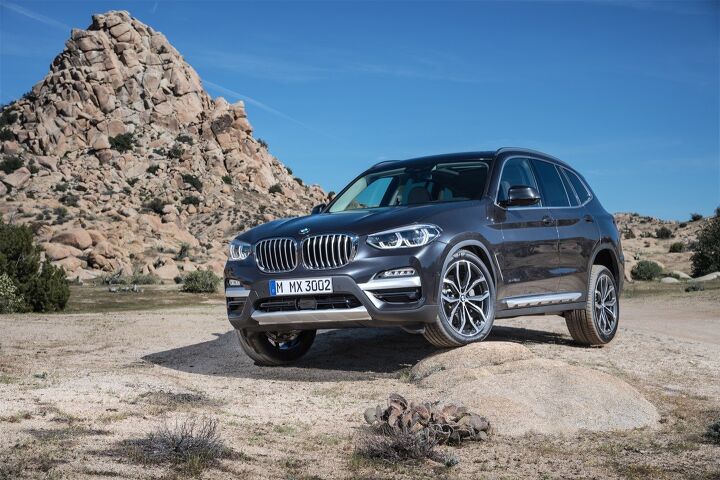

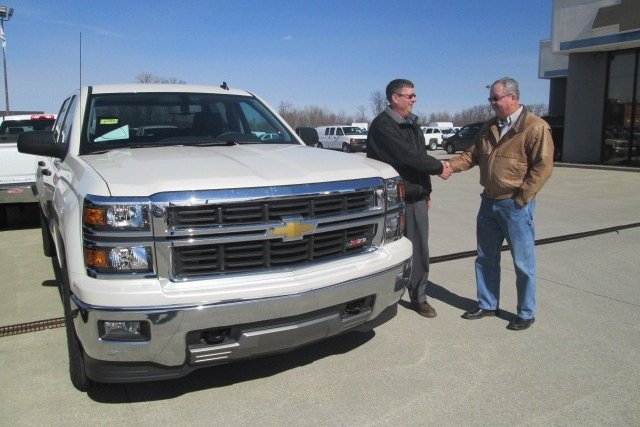
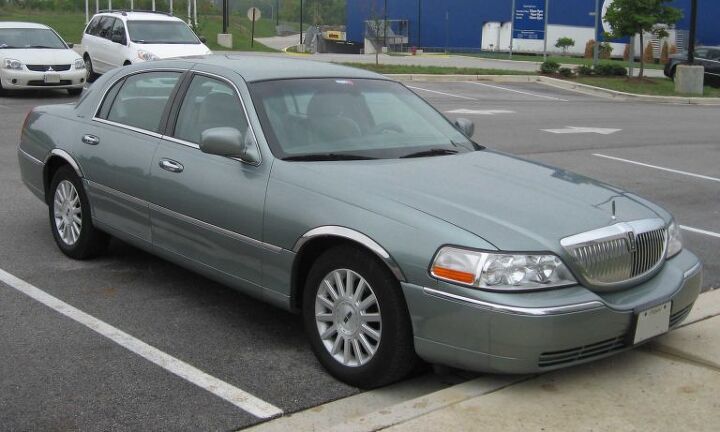

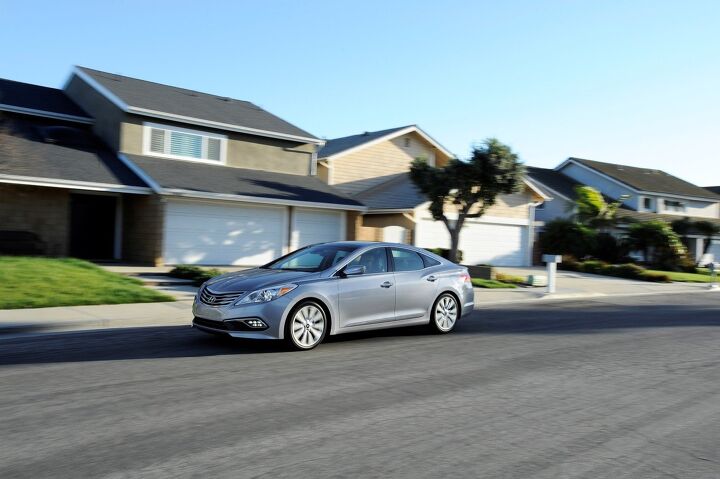
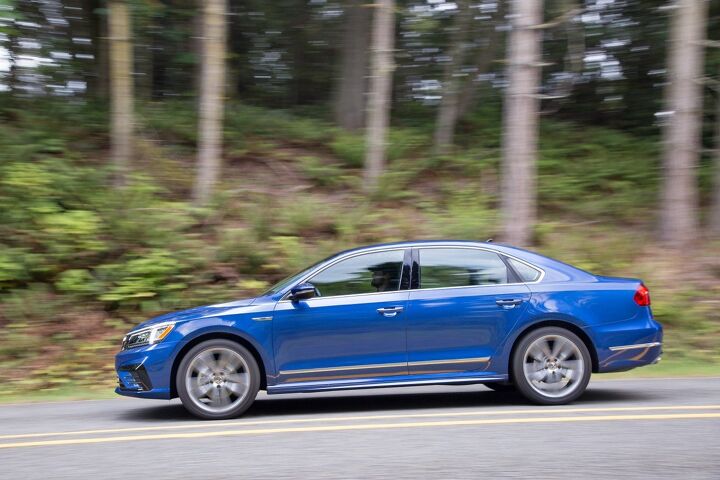

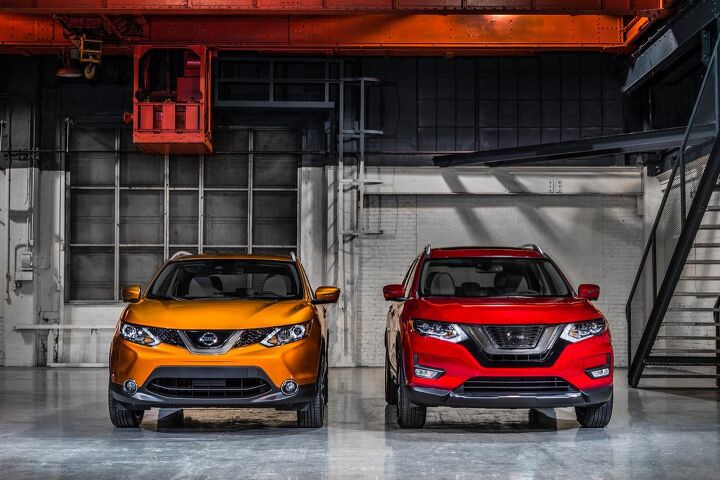
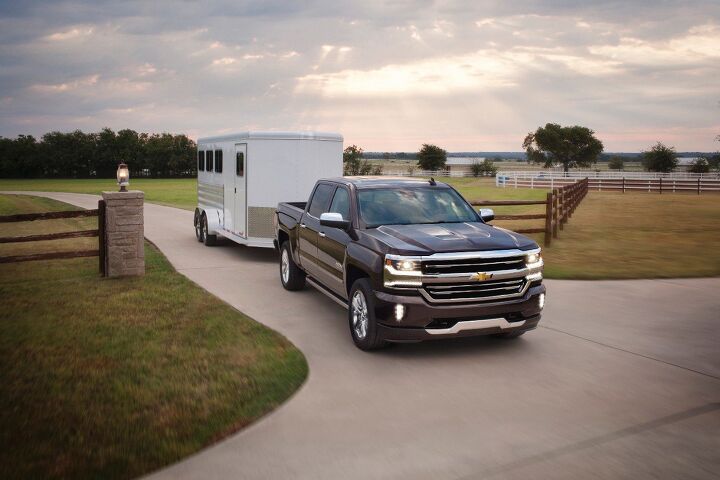
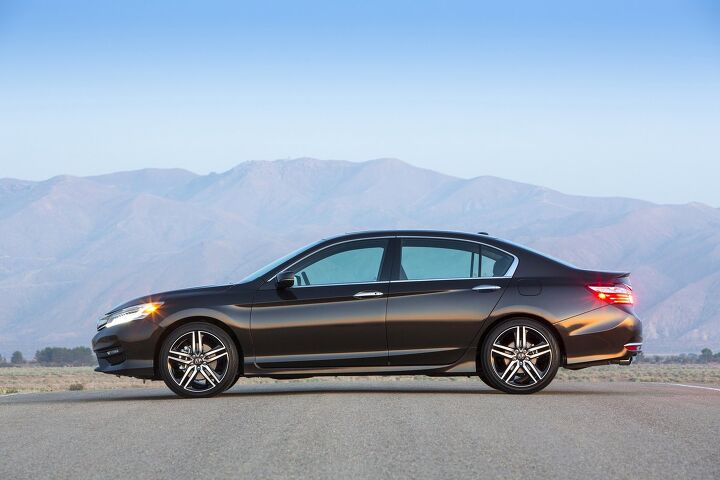

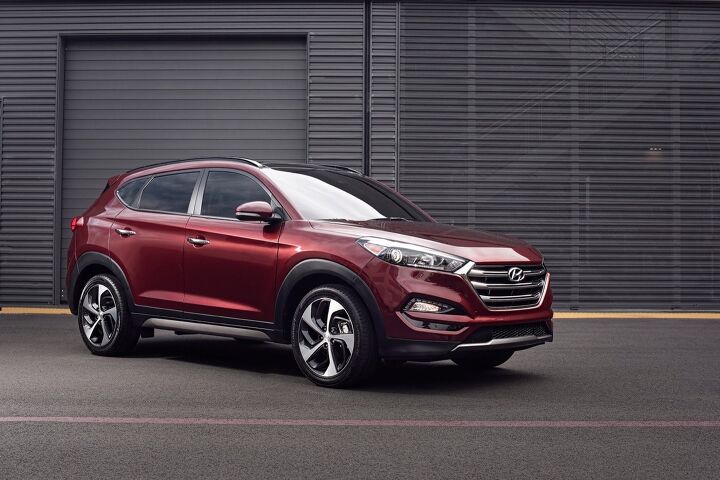


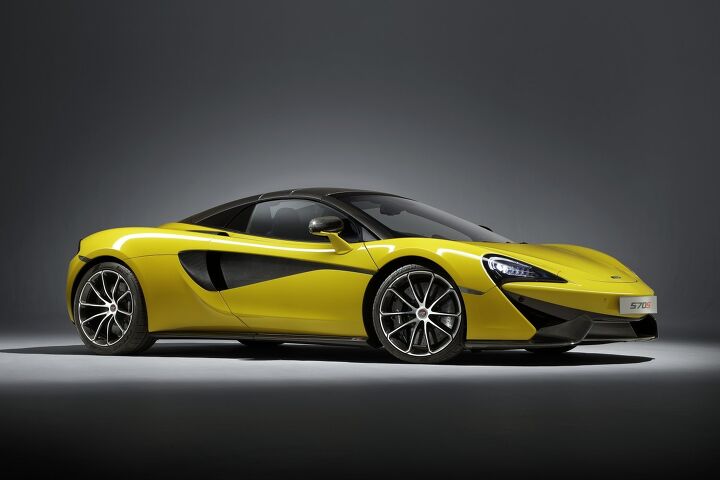



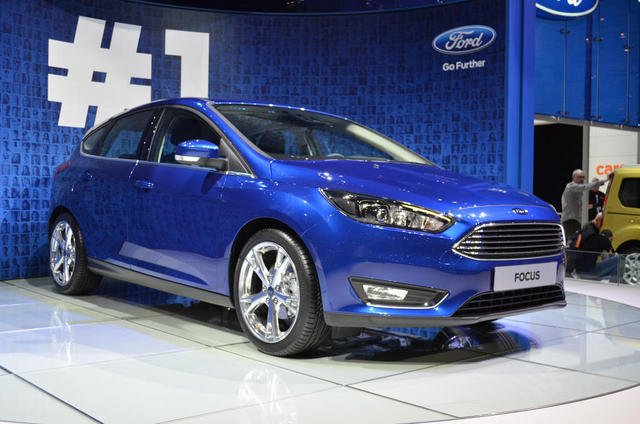
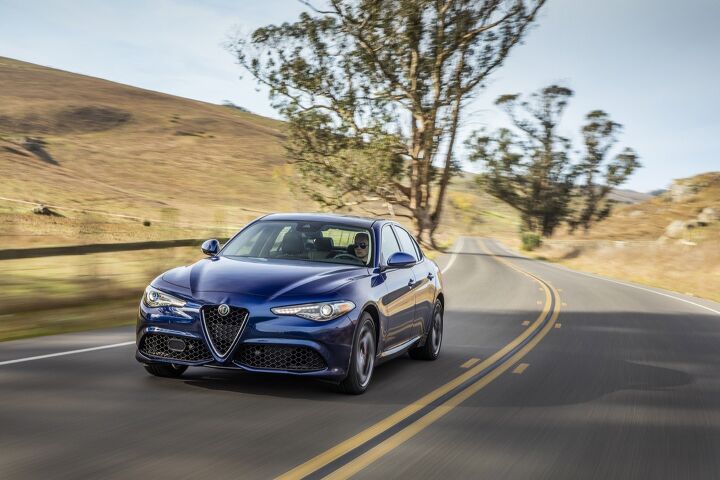

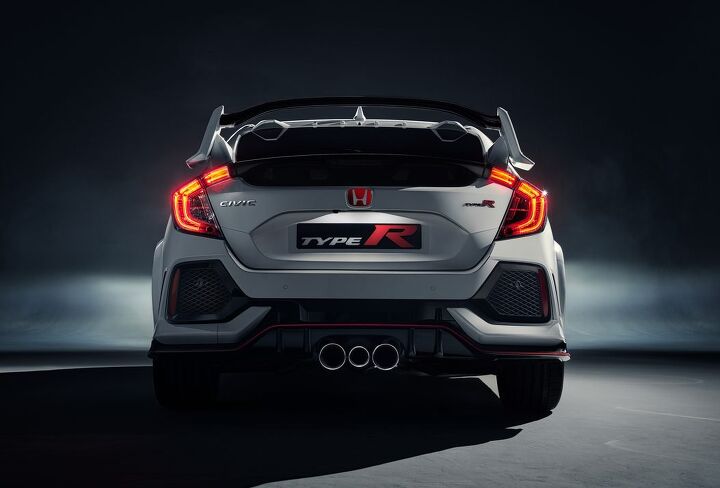
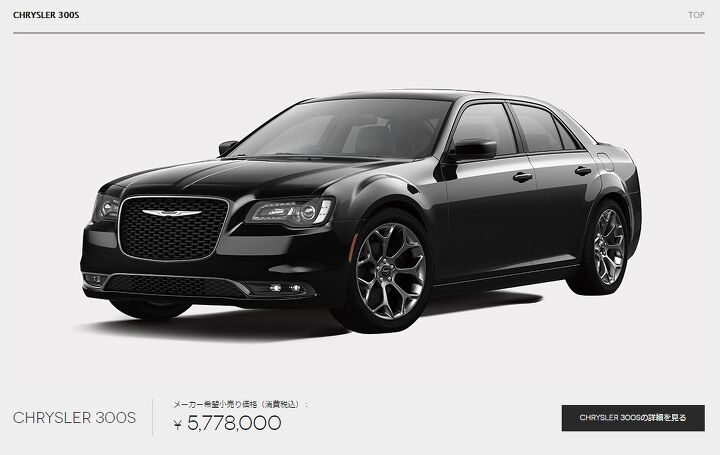
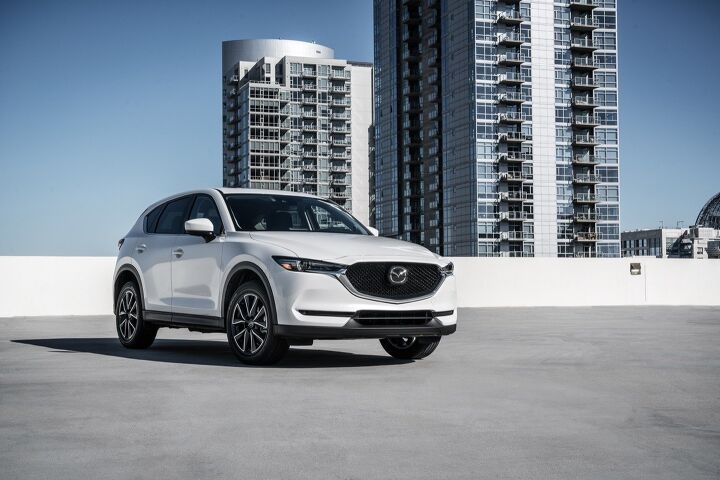




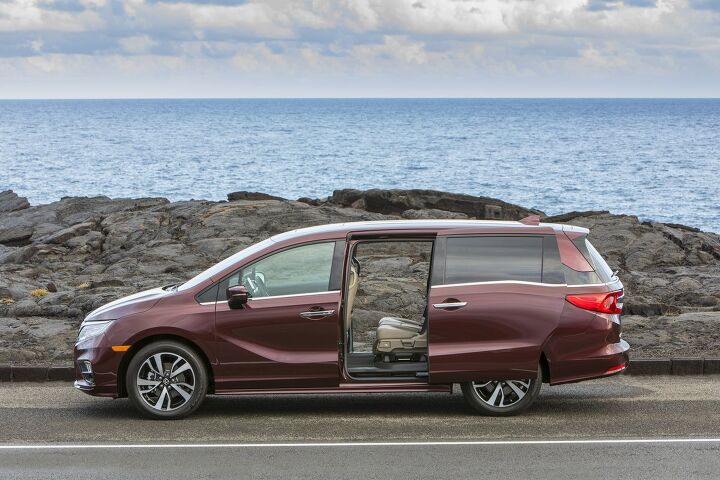
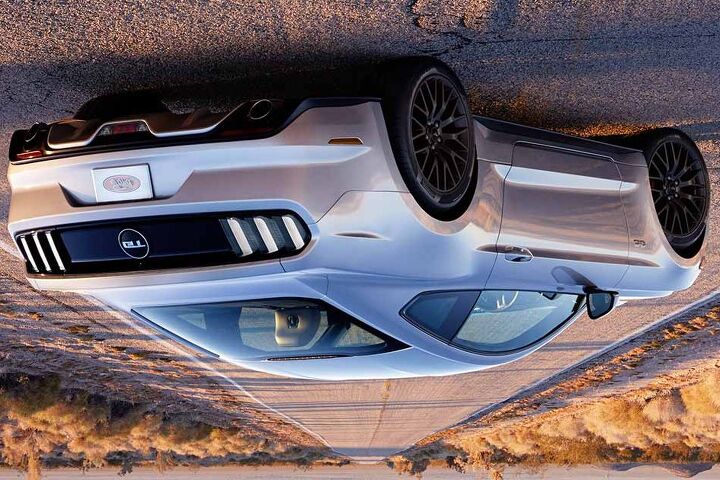



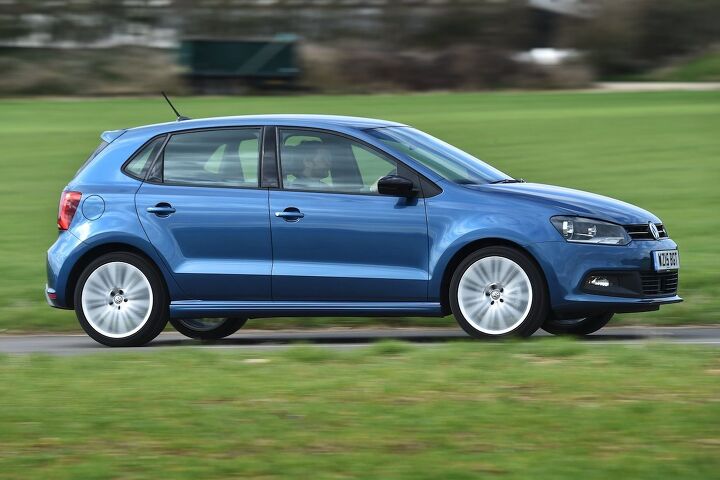
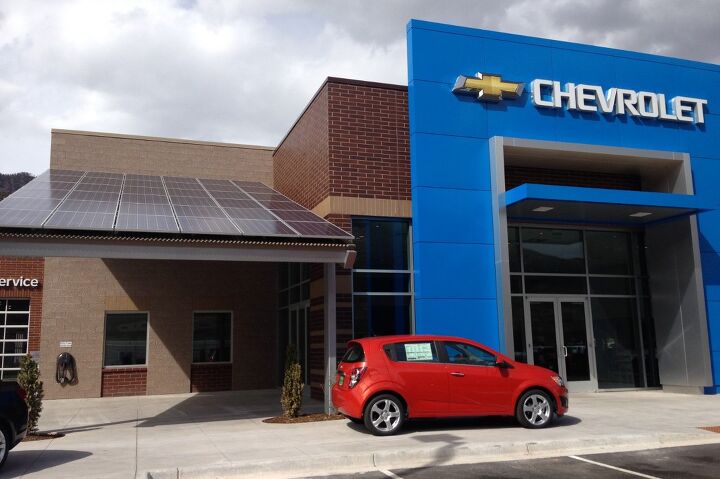
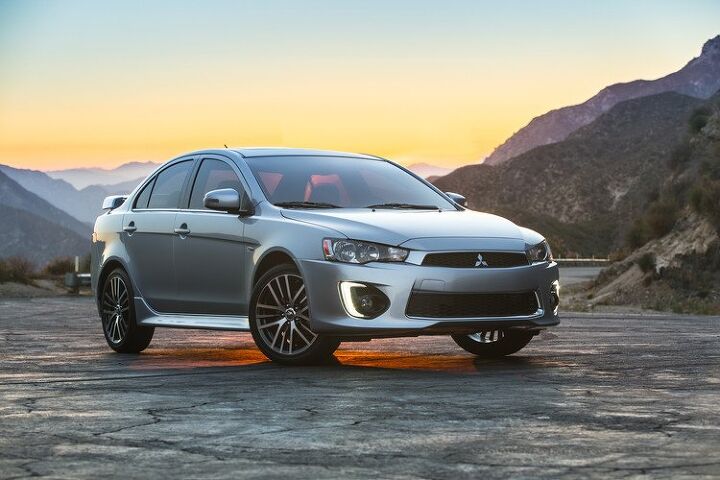














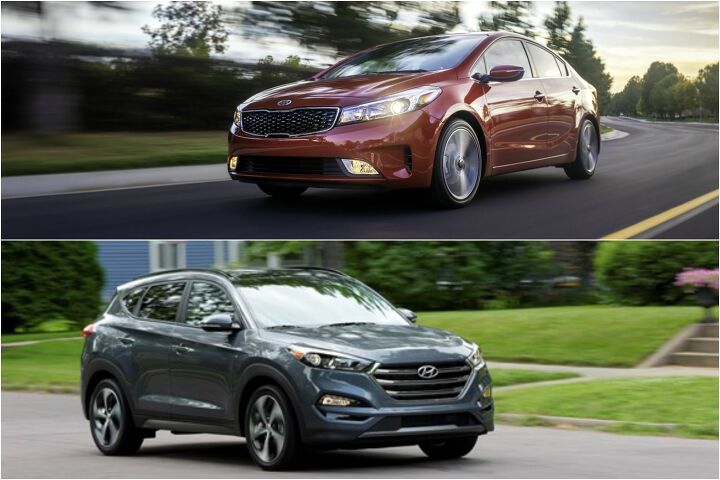



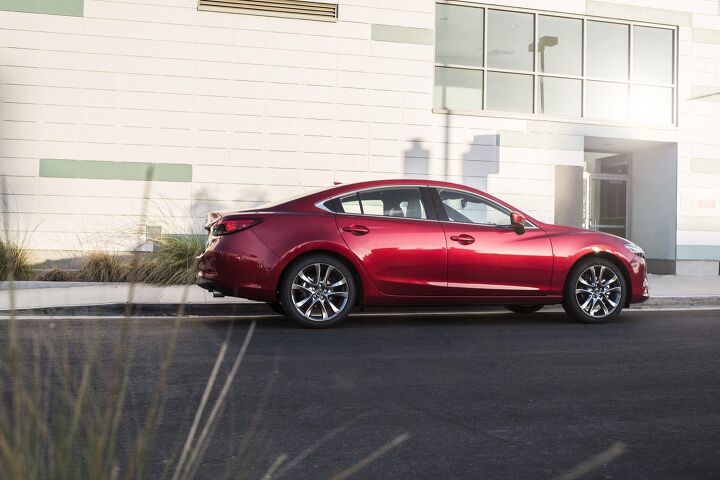













Recent Comments